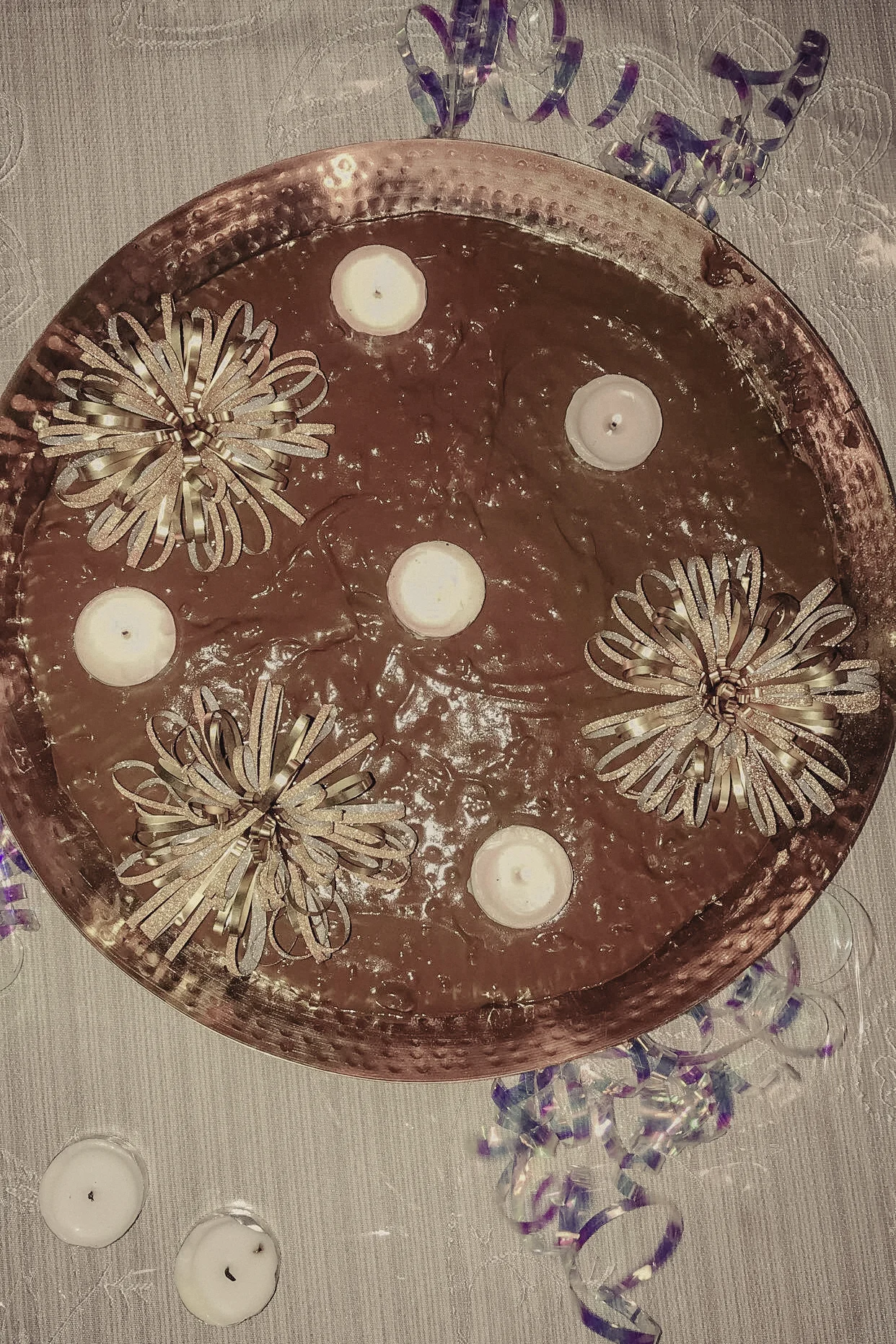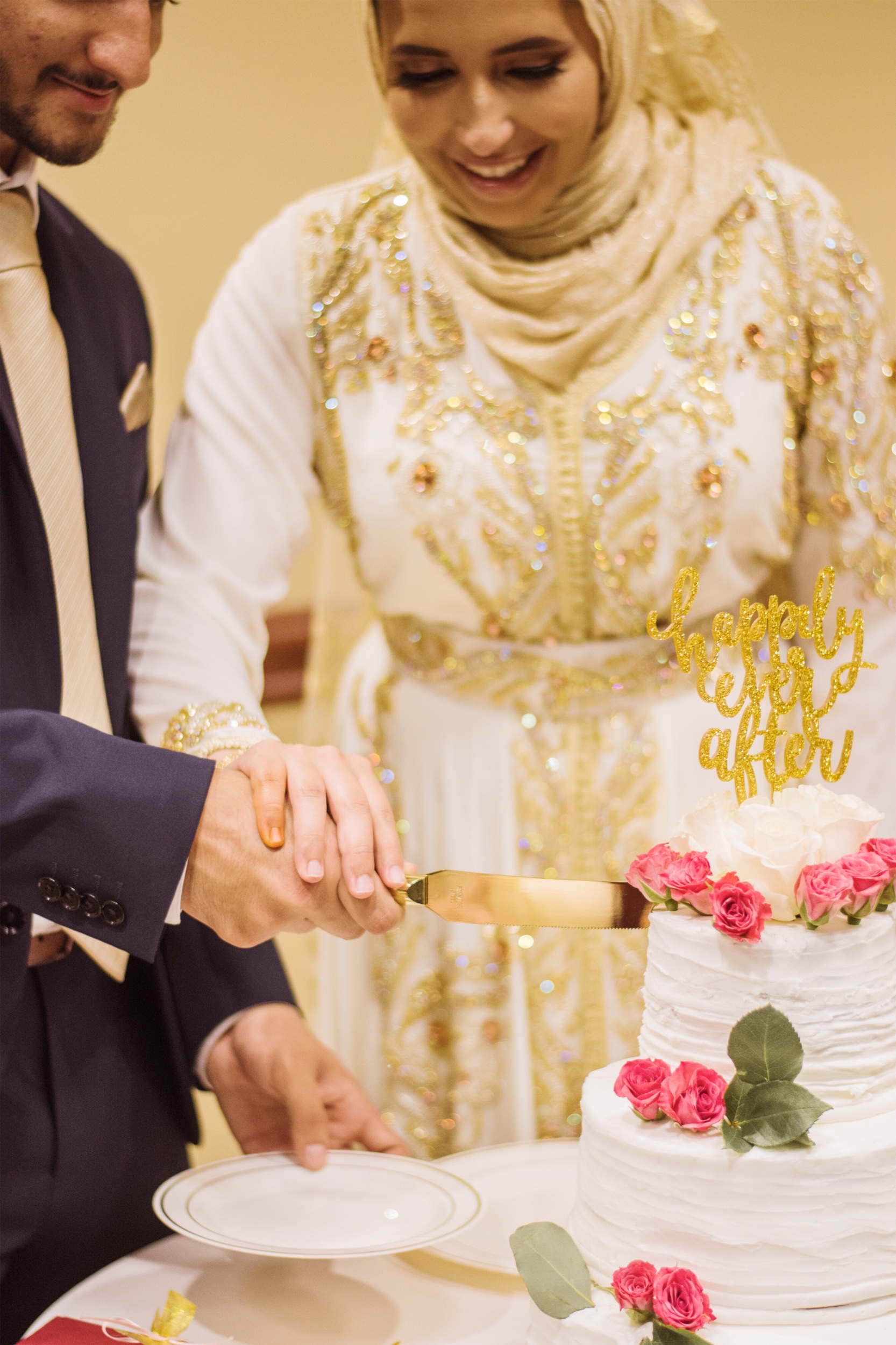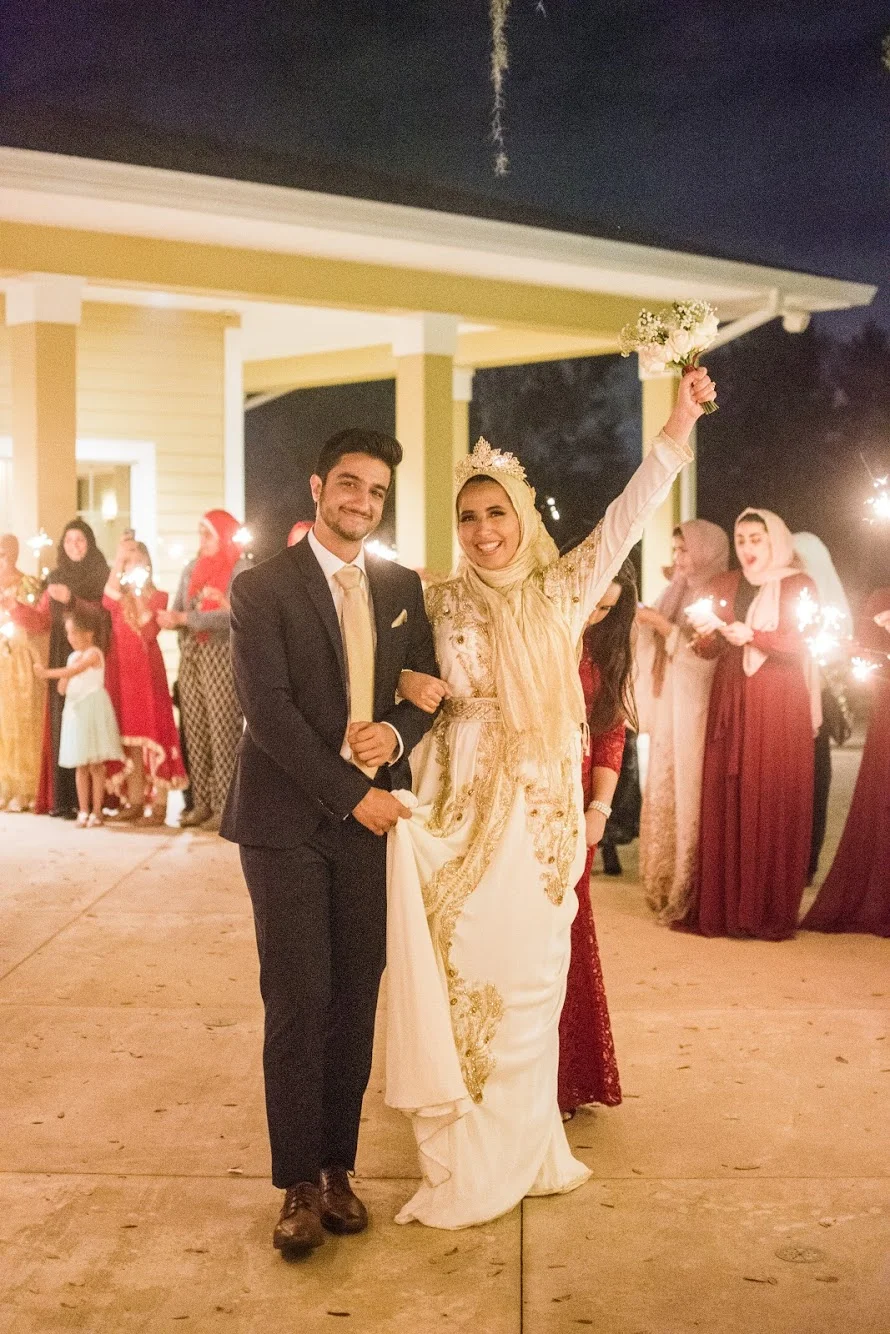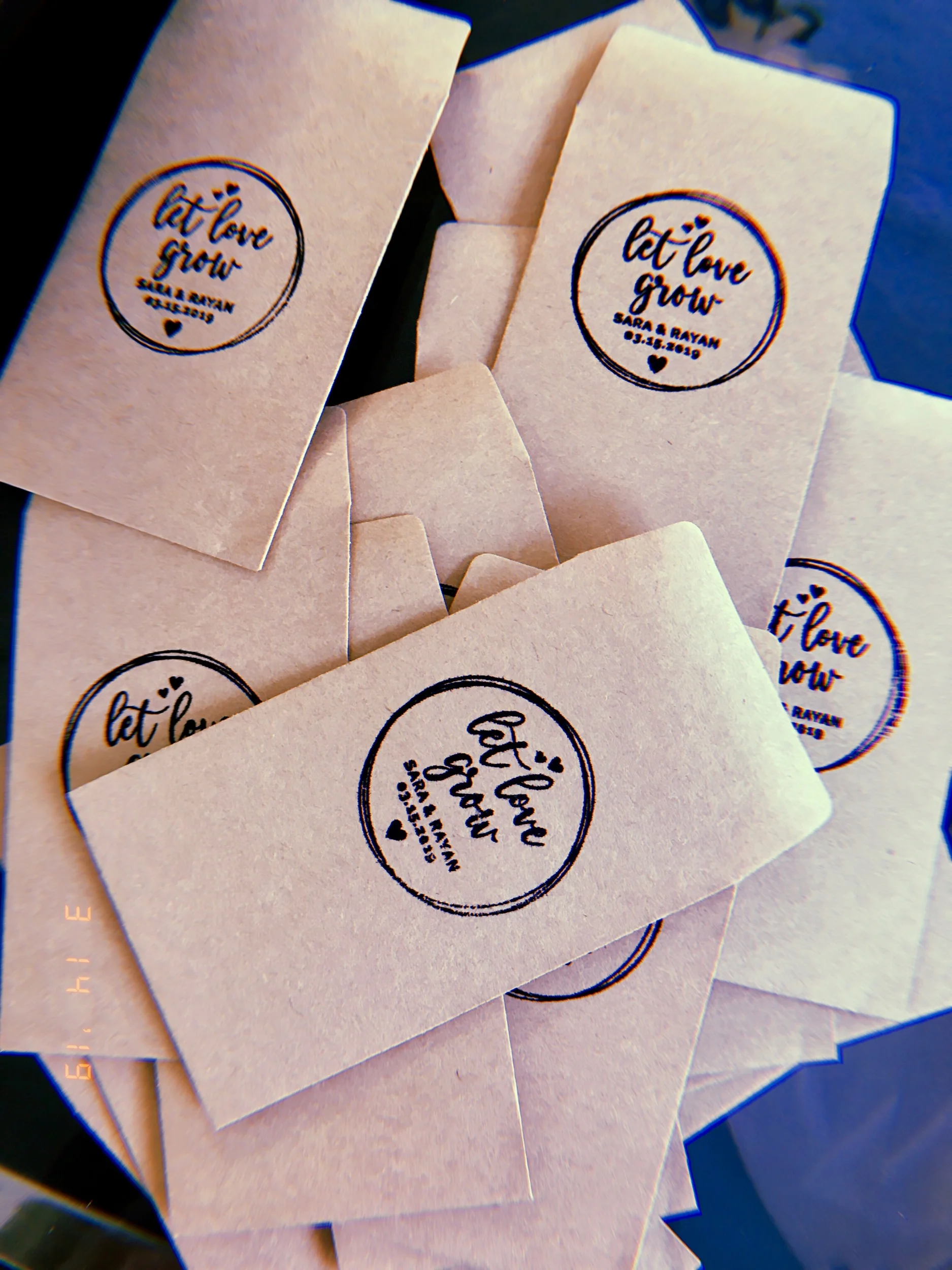Our Wedding
Alhamdullilah (praise be to God), Rayan and I were wed on March 15, 2019, in Tampa, Florida. The wedding was a beautiful, memorable night, and we’re so thankful to all the friends and family who helped make our visions a reality and joined us on our special day. Thank you, from the bottom of our hearts.
I wanted to share with you the overall process of planning/executing our wedding through answering our most-asked questions. Through that, I want to share what our take on an intimate, Pinterest-inspired wedding can look like between two Muslims of Moroccan and Kurdish descent. Let’s begin.
Planning
The commonality shared by both our families from the very beginning was the value of simplicity. To our understanding, this meant they both wanted to avoid extravagances and aim for a gender-separated, low-cost, intimate wedding. That also meant that those involved in the planning (which came down to my sister-in-law and myself ) would have to work a little harder to make something low-budget still look amazing for a wedding, especially since we still had a guest list of around 200 people from our large families and Islamic communities (and trust us, that’s intimate for our standards). I also believed it was important that my Moroccan culture and Rayan’s Kurdish culture were incorporated into the festivities, as well as key aspects of our personalities such as our love for the arts.
In short, we had to DIY. A lot. My sister-in-law, Reeman (bless her soul), helped with all of the planning. We bought most of our decorations from thrift stores, Ross, Dollar Tree, and Walmart. The rest was Amazon. I don’t know what we would’ve done without a Prime account. On our timeline, Rayan and I did our kitab ceremony (which is the Islamic/legal marriage ceremony) on September 2nd, 2019, and our families wanted the wedding reception to be in the following spring or summer. That left us with around 6 months to plan and buy and do everything. At times the stress seemed overwhelming, but if there’s anything I learned throughout this planning process it’s that help comes from unexpected places, and most of the time if you just ask, people will help and go above and beyond.
We didn’t have a very high budget (hence the reason we were DIY’ing in the first place), but we made so much happen with very little, alhamdullilah. I learned that when you make your intentions pure, Allah will bless the process. We managed to get our entire venue for free by choosing a local clubhouse instead of a hotel or estate (this included two separate halls for men and women), we ordered our wedding cake and flowers from Sam’s Club and arranged them ourselves, and we ordered fancy gold-rimmed disposable plates instead of renting more expensive glass ones. Once again, our friends and family also went above and beyond to help us with this undertaking by contributing in ways I couldn’t have fathomed. A friend’s mom built us a gorgeous wooden backdrop for our photo-booth outside, one of my closest friends did my wedding make-up so I wouldn’t have to hire a make-up artist (and she did a fantastic job), and we recruited a local photographer who’s an absolutely talented friend, Vi Huynh, and who refused to charge us (she insisted it was her wedding gift to us). I mention these things to show that it is possible to be creative and save costs, and still come out with something beautiful in the end. Of course, none of the things I listed would have been possible if it weren’t for the wonderful friends and family who stepped in and made our visions a reality. Again, thank you.
In terms of specific DIY’s, Reeman and I would meet up every Friday morning to spray-paint frames and vases, or piece together the backdrop for couple portraits, or paint table numbers, amongst other crafty things. Despite the stress, I’d say this process was quite enjoyable, and brought family and friends together. Beforehand, Reeman and I spent a lot of time researching on Pinterest for inspiration. We pored over friends’ wedding pictures for ideas and eventually came up with our own vision by incorporating a theme of elegance with rustic touches. I’d say that overall, the decor turned out stunningly beautiful.
Pictured above are the flowers we arranged ourselves, alongside a table number we painted. We found the surrounding votive candles on sale and ordered them online.
A close-up of the backdrop we created. All of the elements (flowers, curtains, lights) were purchased on Amazon prime separately and assembled by us.
A DIY project we made by taking a frame from the thrift store, spray painting it, wrapping fairy lights around, and tying twine with mini clips to hold the pictures.
Cultural Traditions
The wedding festivities went as follows: the legal marriage ceremony (kitab), the henna party, and wedding reception. The main way we incorporated our cultural traditions was through hosting a Moroccan henna night for my friends in my hometown and a Kurdish henna night for Rayan’s family in Tampa. The henna night is common to most Middle-Eastern cultures (although each country tends to have differing aspects of tradition), and is dedicated to preparing the bride for her wedding day by adorning her hands and feet with henna patterns. Typically the henna ceremony is done the night before the wedding at the bride’s house. Since we were hosting two henna parties, we did the Moroccan one a month before, and the Kurdish henna the night before the wedding.
For the Moroccan party, the bride-to-be traditionally wears a green dress. We custom-made my dress in Morocco when I visited last summer, and I chose the fabrics and pattern of embroidery. We had family members pick out the matching accessories and ship them to me later. Several close Moroccan families helped host the henna as they were much more familiar with its tradition, and I couldn’t be more grateful. One mother in particular had a knack for baking and DIY’s and created several of our decor pieces and desserts. My best friends came over the night before to help decorate my house, and came early the next day to do my make-up and hair. The henna night is typically women only, but Rayan entered the ceremony with me to take pictures, and he wore a Moroccan jabador, a long white robe with gold embroidery, including matching pants and traditional Moroccan shoes, or belgha. The ceremony basically consists of an entrance (with an escort of chanting and ululating close friends and their moms), a henna application on the bride’s hands/feet, and dancing. Traditional music blared on the speakers as mint tea was poured in everyone’s cups and stuffed dates and sugared cookies were passed around. It was a very wholesome event that made my heart full of love and happiness for my family, close friends, and my roots.
As for the Kurdish henna, I wore a traditional dress that my sister-in-law loaned me. The most noticeable difference between the Moroccan attire and Kurdish is that the latter incorporates more gold into their outfits, from the belts and chains and jewelry. Kurdish dresses also have long, flowing sleeves that are tied in the back. Rayan’s family dressed in traditional attire as well, and performed dabke in the living room. They also had a large tray filled with henna paste and floating candles, and that tray was passed around from family member to family member while everyone moved their shoulders to Kurdish songs. When they finished passing the tray, family members then applied henna on both my pinky finger and Rayan’s, and then proceeded to wrap dollar bills around our fingers as a symbol of good fortune (we’re supposed to keep the henna-stained bills as mementos). I’ve never participated in another cultural ceremony like this, and I’m glad to say I did this while being surrounded by new family.
The last aspect of cultural traditions we incorporated was my actual wedding dresses. When I visited Morocco last summer, my family and I also shopped for wedding dresses there. Our culture has a very distinctive traditional, belted dress adorned with embroidery and beads. The bride, or arousa, wears a crown on her head, heavy jewelry and accessories, and henna on her hands. Traditionally, the bride also changes her entire outfit- dress, accessories, and hair- between 5-8 times at a Moroccan wedding (each outfit is supposed to represent a different region of the country). I’ve always known that if I were to get married I would opt for my cultural dress than the American white gowns, although I wasn’t too keen on the idea of changing that many times. I chose to change only once at my wedding, from one blush Moroccan dress to a white one (I didn’t have access to a Kurdish dress distinctive enough for a bride, so I opted to stick to my cultural attire). The white dress was handmade and shipped to me as a gift from my aunt. The blush dress was custom-made and particularly special to me. It has two layers to it- a pink satin fabric on the bottom and a sheer, heavily beaded layer on top. My grandmother and I bought the satin layer together in the streets of Marrakech last summer. We walked around the bazaar right outside her home, where I frequented as a child. To think that on my wedding day I would be wearing a personalized piece that held so many memories and history meant the world to me.
Photography/Photoshoot
Since I knew there wasn’t going to be a lot of time to take pictures during the wedding, I scheduled a morning photoshoot with me, Rayan, and our wedding party (bridesmaids and groomsmen) at the USF botanical gardens. Vi Huynh was our aforementioned photographer, who tirelessly followed us around the entire day capturing beautiful moments. For someone who was photographing her first wedding, Vi did an absolutely wonderful job.
Program
It was a bit tricky to plan our actual program when the wedding was gender-separated, especially since there was no dance music to keep either side occupied. Ultimately, we had separate programs, and Rayan entered the women’s side to escort me for each entrance (twice in total, for each dress). He stayed for a few minutes each time to either take pictures with family or cut the cake with me and exchange rings. During the dinner reception, I had my best friends, my mentor, and my mother make speeches on the women’s side, which were heartfelt and definitely made everyone’s emotions run high. Shortly after, we exchanged wedding bands, then invited our male relatives over to the women’s side for full family portraits. During this time, the bridesmaids organized everyone outside and passed out sparklers for the newlywed exit. We initially planned to have music and dancing towards the end, but time passed so quickly we barely got to it before we were scheduled to be sent off. I’m sure more occurrences took place throughout the event, but as the bride I felt that the whole day passed in a blink, and before I knew it the wedding was over.
Personal Touches
The benefit of creating most of the decorations yourself is the flexibility with personalizing it. I tapped into my skills as a painter and created some of the signage at our wedding, like our main Welcome sign. On the guest tables, we had small table numbers in the form of artist easels, which we custom-painted ourselves. Outside the halls, there was an open courtyard with a large oak tree wrapped in string lights. We decorated branches of the tree with hanging ornaments we either made ourselves or bought from dollar tree, including mini Arabian lamps. In front, we had a table with our guestbook in the form of a frame with signed hearts. We had several props in that area, like a giant camera (to represent Rayan’s love for photography), and a large easel with a bouquet of baby’s breath flowers and paintbrushes. Rayan and I are also big fans of the show Game of Thrones, so I gifted three of my bridesmaids (also major fans) with Hand of the King and Dragon Queen pins to wear on their bridesmaid dresses. One of my favorite books is the Kite Runner, so we created a frame painted with the quote, “For you, a thousand times over”. As for wedding favors, we made custom-stamped flower seeds packets, in reference to the love of nature that Rayan and I share. In all, I don’t think anyone at the wedding noticed every easter egg we included, but I like to think that Rayan and I’s personalities are eclectic, and those who know us would be able to recognize parts of us at our wedding.
Lessons
This was my first time ever being involved with planning a wedding, and there was much to learn. If there’s any advice I can impart with you, it’s this:
Before all else, set the right intentions and aim to increase baraqah (blessings) at your gathering.
Set a budget and stick with it. Create multiple categories (i.e Food, Venue, Decor, etc) and allocate a certain amount. If you need to increase one category, decrease funds in another.
It is absolutely possible to have a beautiful wedding without the outrageous expenses associated with it. See tip 1 for a reminder.
Be open to having friends and family contribute with their skills. You’d be surprised at what they can do.
Compromise. Family members and friends all have different expectations of you. You will not please everyone. Have a clear sight of what YOU want, prioritize what’s important, and identify the things you are willing to compromise on.
Have a back-up plan for the program. Something always goes wrong on the day of an important event, so it’s important to coordinate with people beforehand and anticipate delays or malfunctions.
Practice gratitude often. Thank people for helping, thank guests for attending, and thank Allah for every bit of ease He gives.
At the end of it all, I certainly have a lot of gratitude for my family, friends, and ultimately for Allah. All I can say is alhamdullilah, and onward we go.

































